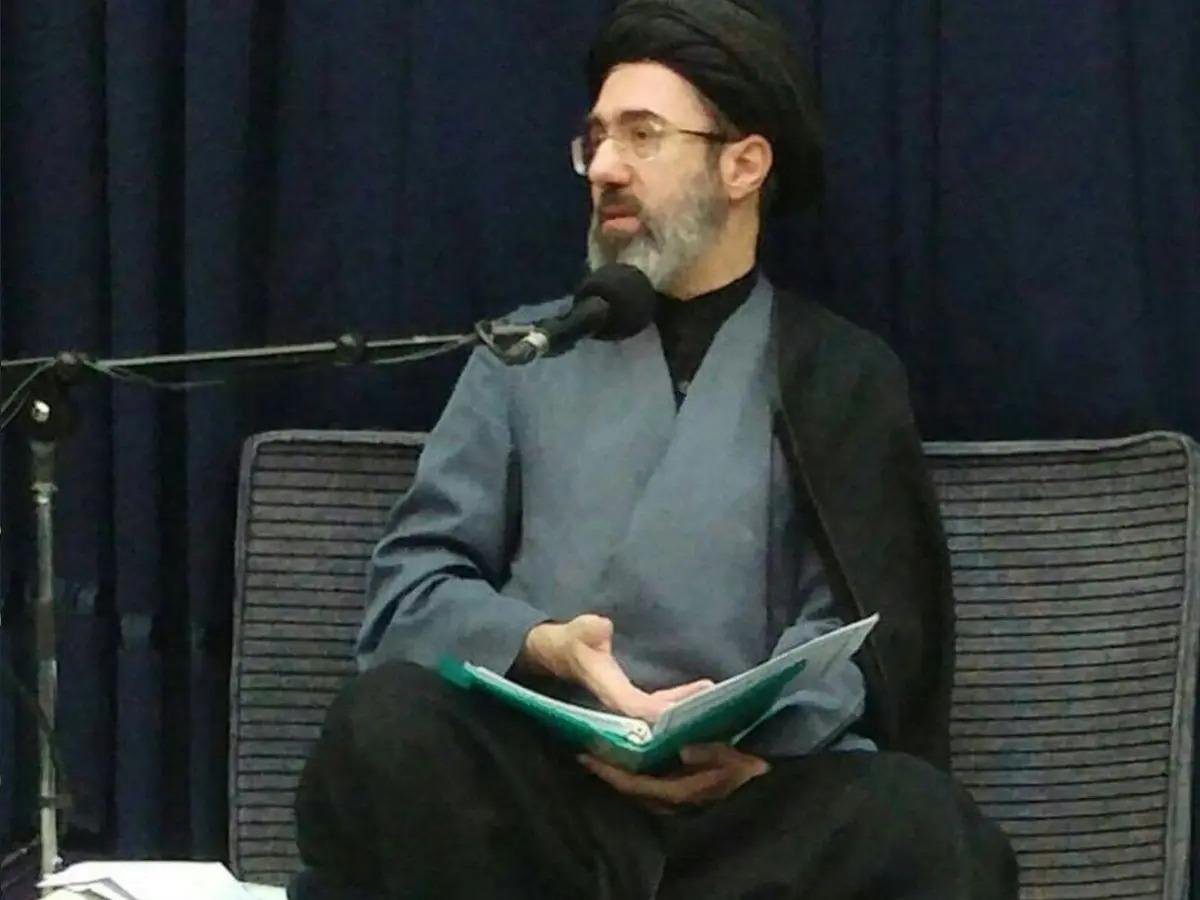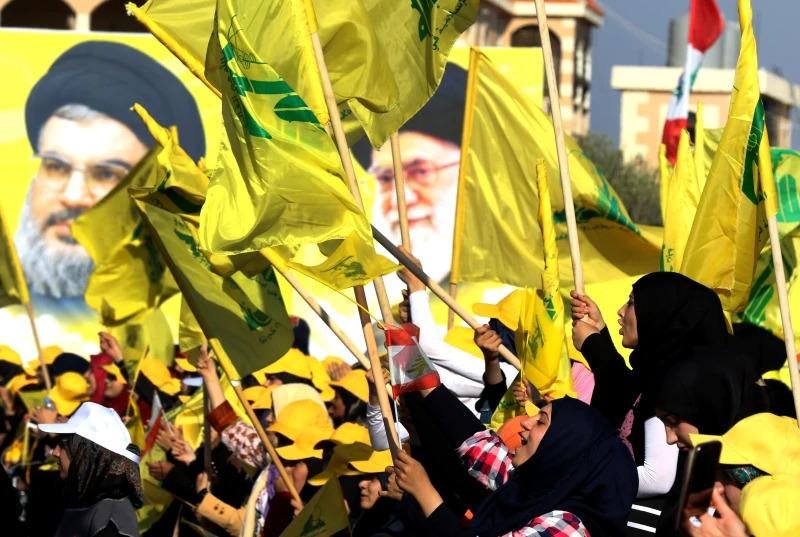After me, the deluge? The post-Khamenei Islamic Republic
Rumours about the death of Iran's Supreme Leader Seyyed Ali Khamenei several times in recent months have rekindled questions about the post-Khamenei era in Iran. During the reign of Khamenei, who has been in charge for 33 years, the supreme leadership institute of Iran has become a centre that directs political and social processes, socio-economic situation and foreign policy in the country. Khamenei, who does not have the high religious rank (marjaiyyat), charisma and popularity of (his predecessor) Ayatollah Khomeini, consolidated power due to factors such as the expansion of the Office of the Leader (Beit-e Rahbari) through formal and informal means and the strengthening of the Revolutionary Guards in the decision-making mechanisms and foreign policy of the state since the 1990s.
The leadership apparatus, which was more of a religious centre during Khomeini's time, turned into an organized and centralized bureaucratic apparatus under Khamenei's rule. For these reasons, the identity of the person who will come to this position after Khamenei is of great importance.
Among the people rumoured to be successors of Khamenei in recent years, the highest-ranking person is the current President Ebrahim Raisi. Raisi, who worked in judicial structures for many years, performed the duties of the Chief Prosecutor and Chief Justice, and the head of the billion-dollar Imam Reza shrine fund. The fact that he has sufficient supporters in both the security apparatus and religious circles can be considered as one of the factors that strengthen his candidacy.
Khamenei's appointment of Raisi to the position of the Chief Justice two years after his defeat to Hassan Rouhani in the 2017 elections, and his election in the 2021 presidential elections without any serious challengers directly indicate the high level of trust Khamenei has bestowed on him. It is also necessary to consider that Raisi, as the head of the executive body, is able to direct the transition period after Khamenei, both legally and practically.

Despite all this, Raisi's inability to achieve serious success during his presidency made him, like all the presidents before him, a scapegoat for various circles within the system. It is even said that, according to the rumours, Raisi was elected president by groups within the elite who wanted to weaken him. One of the most prominent among these forces is Mojtaba Khamenei, the second son of Ali Khamenei. Mojtaba, who also plays an important role in the management of the leadership apparatus, has plenty of allies and supporters in the security agencies. It is claimed that Mojtaba played an important role and directly intervened in many important processes, including the election of Ahmadinejad in the 2005 elections and the harsh suppression of the 2009 protests.
Mojtaba's close circle includes Hossein Taib, who headed the IRGC intelligence department until the summer of this year, and his assistant Hasan Muhaggiq; Mohammad Esmail Kovsari, a member of parliament and former commander of IRGC Sarallah Headquarters, which oversees Tehran and the surrounding areas; and Ebrahim Jabbari, the former head of Khamenei's personal guard. These connections are important indicators of Mojtaba's close relationship with people in critical positions inside the system and the influence he holds.
How will the removal of Hossein Taib and Ebrahim Jabbari from their positions in the summer of this year after successive problems in Iranian intelligence will affect the status of Mojtaba Khamenei and the extent of the relationship between Mojtaba and Raisi, however, are unknown. A few months ago, the news about Mojtaba Khamenei starting to teach kharej fiqh (jurisprudence) lessons, which is an important requirement for marjaiyyat, and addressing of Mojtaba with the title of Ayatollah in the media of the Qom seminary, brought further attention to Mojtaba and his close circle’s aspirations for the position of leadership.
Previously, former Prime Minister Mirhuseyn Musavi, who was a candidate in the 2009 elections and has been under house arrest since 2011, in an article criticizing the state's internal and foreign policy on the Kalima website wrote that there were rumours about Mojtaba's preparation to replace Ali Khamenei. Mousavi emphasized the fact that no one has denied these rumours even if they are not true. What is interesting is that in none of the response articles written to Musavi in the system's media outlets such as Keyhan, Tasnim, and Javan the issue of Mojtaba was mentioned.

However, it should be taken into account that there are other factors weakening Mojtaba's leadership aspirations. In particular, the views of Ayatollah Khomeini, the founder of the current system, regarding the dynastic method of administration being contrary to Islam, and the fact that the current system was established after the fall of the Pahlavi dynasty, means Mojtaba’s leadership would sharply trample on the ideological red lines (khatt-e Emam) of the system. Therefore, it is reported that there are concerns about Mojtaba both within the security apparatus of the system, as well as in religious circles. In the post-Khamenei era, the possibility of serious opposition to the election of Mojtaba as a leader and of intra-elite conflicts suggests that Mojtaba is not a consensus candidate for various power centres and interest circles within the system.
Among the figures who have been named for the leadership in the post-Khamenei period, or who are expected to play a significant role in the transition period, there are other influential people who have worked for a long time in various arms of the system. Former president Hasan Rouhani, former Chief Justice Sadiq Larijani, and Alireza Arafi, the Friday prayer leader of Qom, were among those whose names were mentioned for leadership at different times. Even if the mentioned persons are unlikely to become a leader for various reasons, there is a chance for each of them to play an important role in the processes. In addition to them, among those who are expected to influence the transition process is 95-year-old Ahmed Jannati, the head of two very important institutions - the Assembly of Experts and the Council of Guardians, along with the administrators of the "deep state" - Khamenei's apparatus, Muhammad Golpayegani, Ali Asgar Hijazi, Vahid Haganian; the leadership of İRGC and the high-ranking clerics of the Qom seminary.
In order to understand Khamenei's death and the subsequent transition period, it is quite important to look at the processes that took place after Khomeini's death. At the time of Khomeini's death in 1989, unlike today, the system was not yet fully settled, and there were various ideological factions fighting each other within. The Assembly of Experts, which was composed of 88 influential clerics, was much more independent than it is now. At that time, the name of Ayatollah Khomeini's son Ahmad Khomeini was also mentioned for the leadership. However, in the end, Rafsanjani, who was the Speaker of the Majlis (later President), succeeded in getting Khamenei elected as the leader with the support of Ahmad Khomeini.

According to information that emerged later, Khamenei's leadership was intended to be temporary for a one-year period, as Khamenei did not have the religious rank to rule. However, later the Constitution was amended by a referendum and the condition of high religious rank was abolished, and the issue of Khamenei's interim leadership was closed once and for all. In the early years of Khamenei's leadership, the Rafsanjani-Khamenei tandem neutralized ideological rivals and dissenting groups within the system.
After the suspicious death of Ahmad Khomeini in 1995 and the end of Rafsanjani's presidency in 1997, Khamenei remained the single figure at the centre of the system, and in the following years grew stronger to become the absolute ruler of a network of power that included forces directly subordinate to him both domestically and in the Middle East region. The fact that the system is now much more centralized, politically and ideologically homogeneous suggests that the election of the next leader will be different from 1989.
The fact that the leader of Iran is the supreme decision-making figure in the country's foreign policy and security issues makes it important for the successor to stick to the foreign policy course conducted by Khamenei. In this sense, it is important for the next leader, regardless of who he is, to continue and strengthen strategic relations with China and Russia, to show a distant attitude towards the West, and to maintain relations with Iran's regional influence networks, especially Shiite groups in Iraq and Lebanon-based Hezbollah.

It is expected that the groups included in Iran's regional power networks will pledge allegiance to the new leader, and at the same time, the new leader will continue to support groups such as Hamas (Palestine) and Ansar Allah (Yemen), with which Iran formed strategic relations against its rivals in the region, Israel and Saudi Arabia. Unlike in 1989, however, the groups in Iran's regional network of influence and their leaders have enough power and influence in their own countries, which may create the probability of the emergence of centrifugal tendencies in the post-Khamenei period. Therefore, the new head of Iran should be chosen not only by the consensus of intra-elite groups, but also with the support of religious and political groups in Iraq and Lebanon.
It should also be remembered that there’s the example of Mohtashamipur in Iran's relations with the groups in the region. In the 1980s, Ali Akbar Mohtashamipour, who was Iran's ambassador to Syria and Ayatollah Khomeini's representative for Syria and Lebanon, played a very important role in forming the relations of the revolutionaries with the Syrian military-intelligence agencies and in the creation of the Hezbollah organization. Mohtashamipur was also alleged to have been in charge of IRGC’s operations in Lebanon for a long period.
However, Mohtashamipour, who was returned to Tehran by Rafsanjani after Khomeini's death, was neutralized after holding various positions in the country and became a critic of Khamenei towards the end of his life. In the post-Khamenei era, especially in the absence of Qasem Soleimani, it is questionable whether Iran's new leadership can that easily change the people managing relations with regional groups, and whether these changes will be accepted by the groups that have grown stronger in the last 20 years.








